A story-based, first-person exploration RPG created through the Unity engine. Players can spend about 10 minutes immersed in a 3D puzzle room, deciphering and trying to escape a dream world made up of obsessions.
The game got 83 points for Production Quality in the Assessment.
Why this?
Due to my personal passion for Chinese opera, I chose to use story elements related to it, including the theatre stage and the decorative model. This game is inspired by some of the escape mechanisms I have personally experienced and the film Farewell My Concubine (Chen, 1993). There are also some similarities between the protagonists of this game and the film; both are the "insane" ones who would do anything for the opera. The film also clearly shows the impact of the Cultural Revolution on opera, as well as the oppression of people and the difficulties of cultural transmission. This is also what I wanted to illustrate.
The game chooses the period of the Cultural Revolution as the background of the story, not only want to pay tribute to the film Farewell My Concubine, but also hope that more people can be aware of the protection of traditional culture in this atmosphere can not be repeated, so that more people understand the charm of the opera and pay attention to the inheritance of Chinese Tranditional Opera.
What is Cultural Revolution?
The Cultural Revolution took place in China from 1966 to 1976. Many artists and opera practitioners have been labelled state traitors by the public simply for performing Chinese operas, which has been interpreted as an ancient superstition of the Qing Dynasty. Simultaneously, as a result of Communist propaganda for the working class, there were plenty of stereotypes about opera workers who used to "exclusively serve the rich". Many artists have endured cruel "criticism" with physical and mental torture as a result. Many of them chose to give up their lives because they can't stand the pain.
The story of the game's main character takes place during a dark time in the theatre industry. As a result, there are some negative words and emotions in the plot of the game.
How to create an Immersive Gaming Experience?
Game flow Designing
How the game flow is planned becomes important in order to present the player with a sense of immersive gaming experience. Therefore, during pre-production, a rough sketch was made in order to better visualise the game scenario and flow.
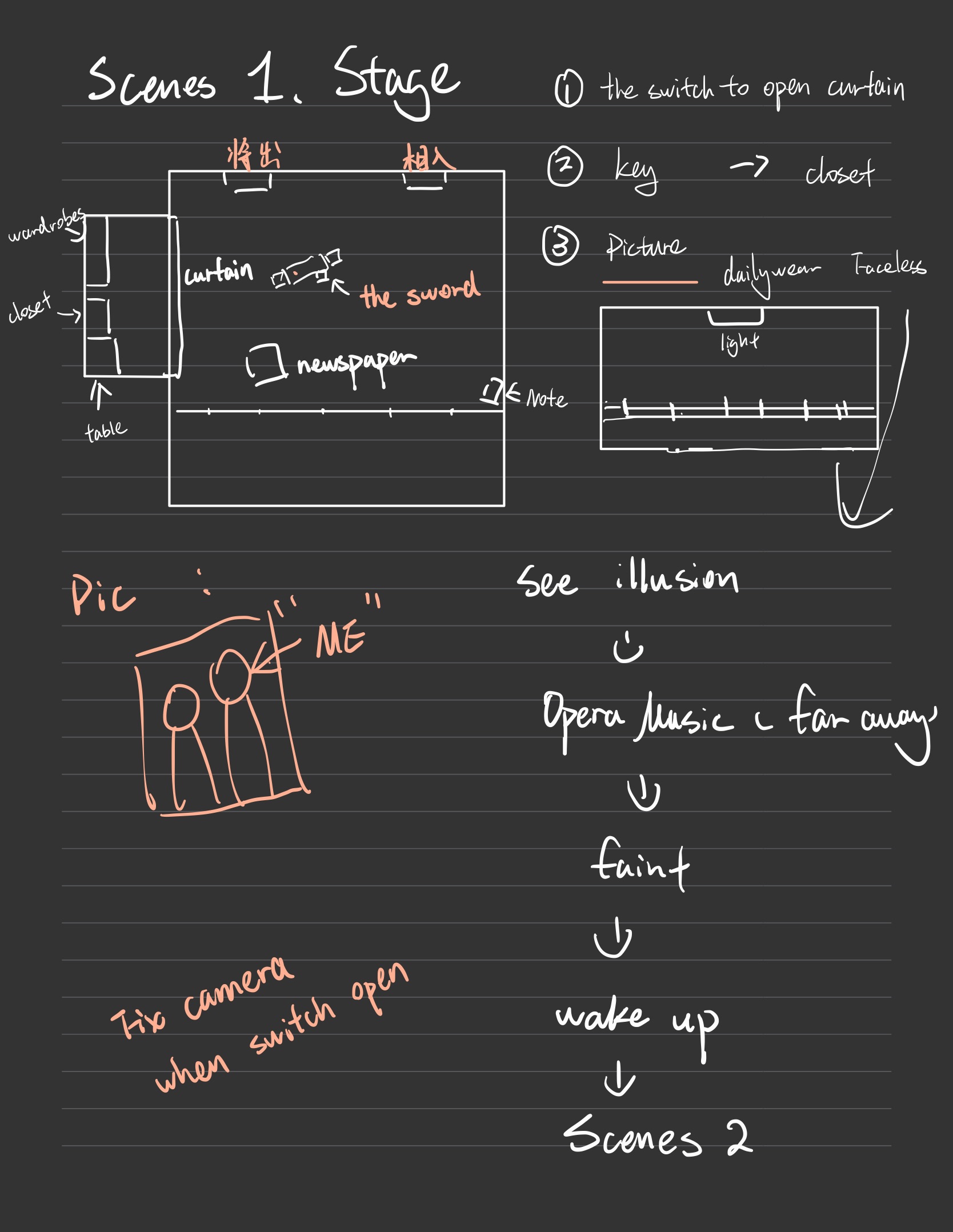
Scene 1 scenarios, route design and interaction details (initial Version)
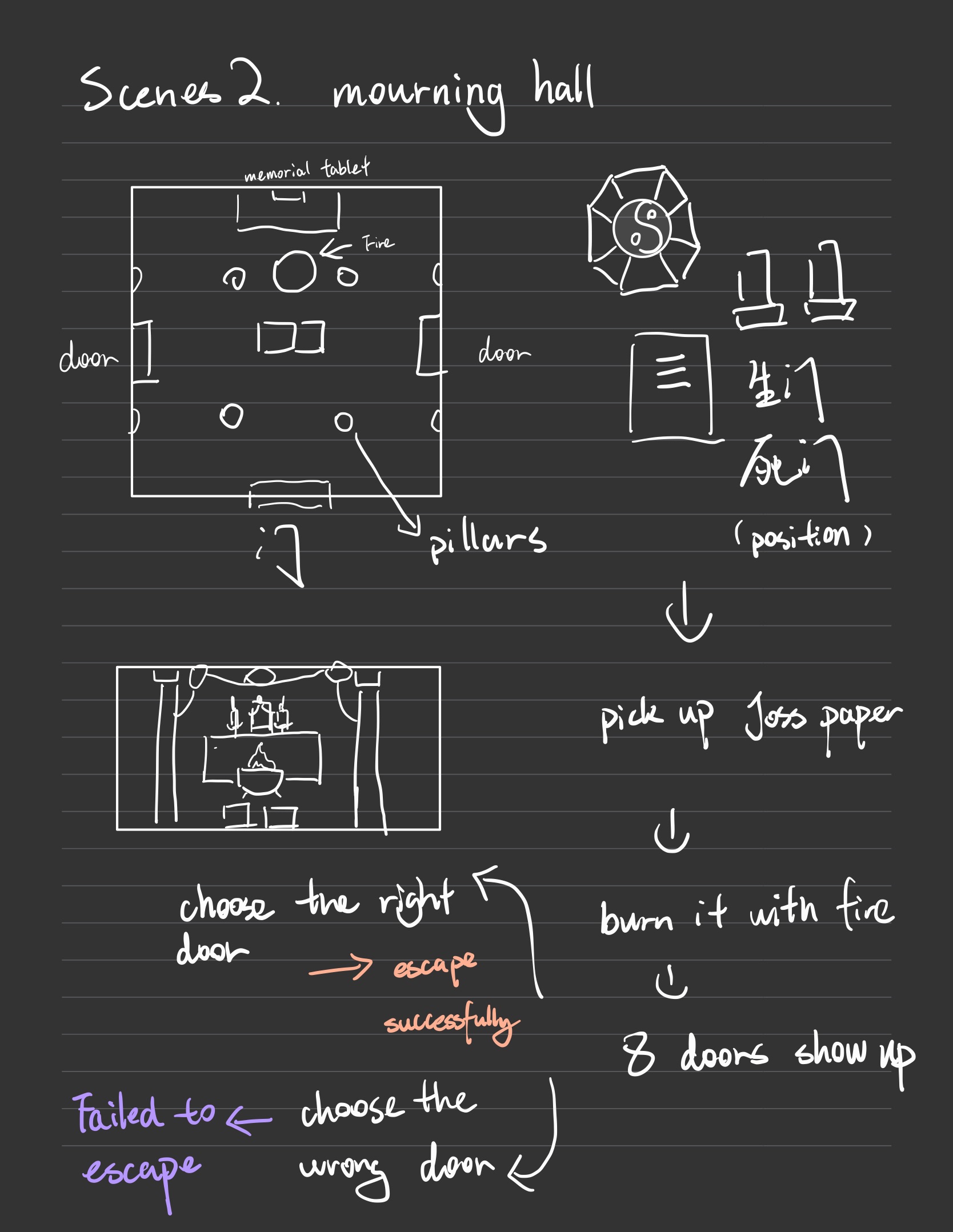
Scene 2 scenarios, route design and interaction details (initial Version)
Modeling
The special props in the game are made by Nomad and drawn by Procreate, these props with strong Chinese elements help build the storytelling of the scenes.
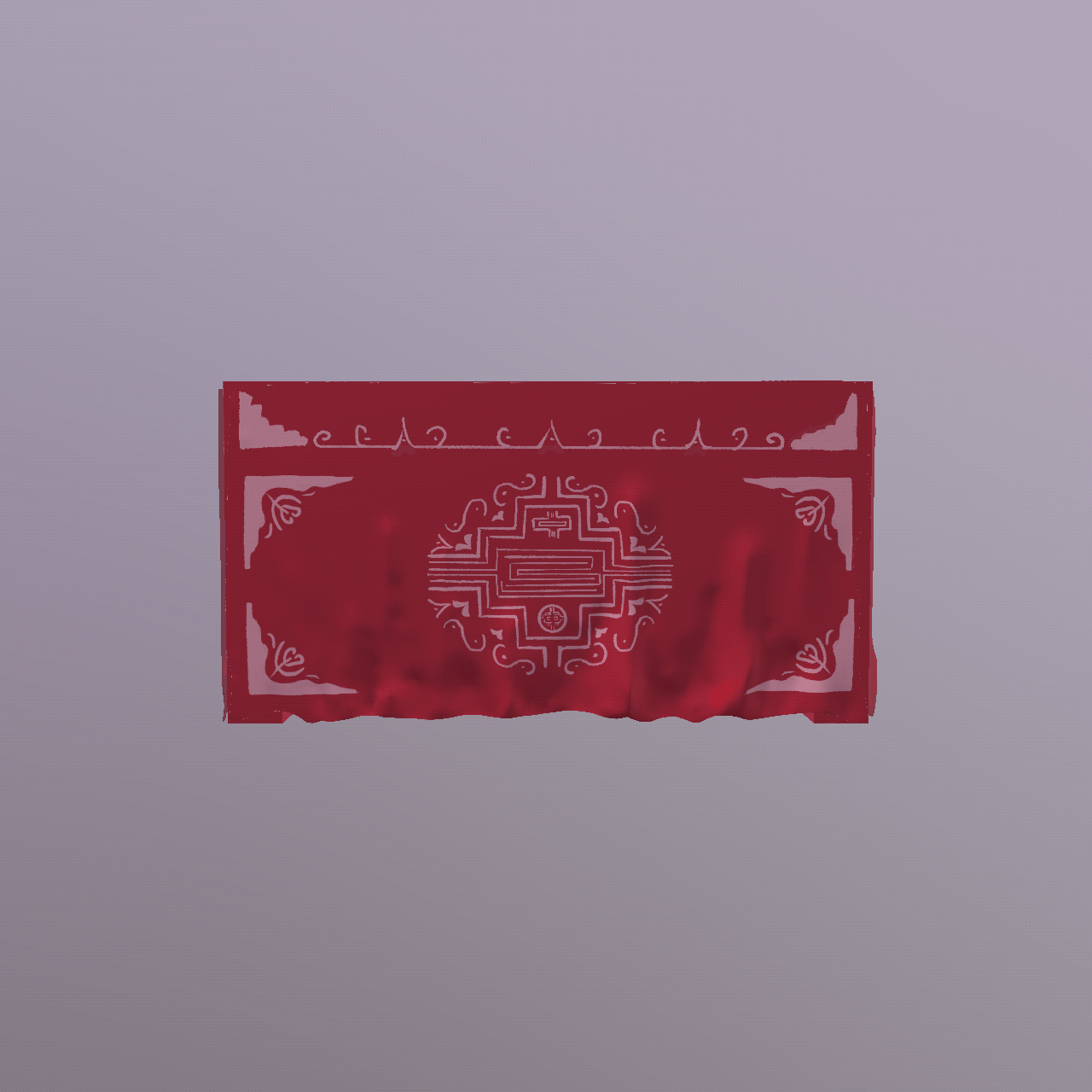
Scene 1 - Prop table used in Chinese Opera
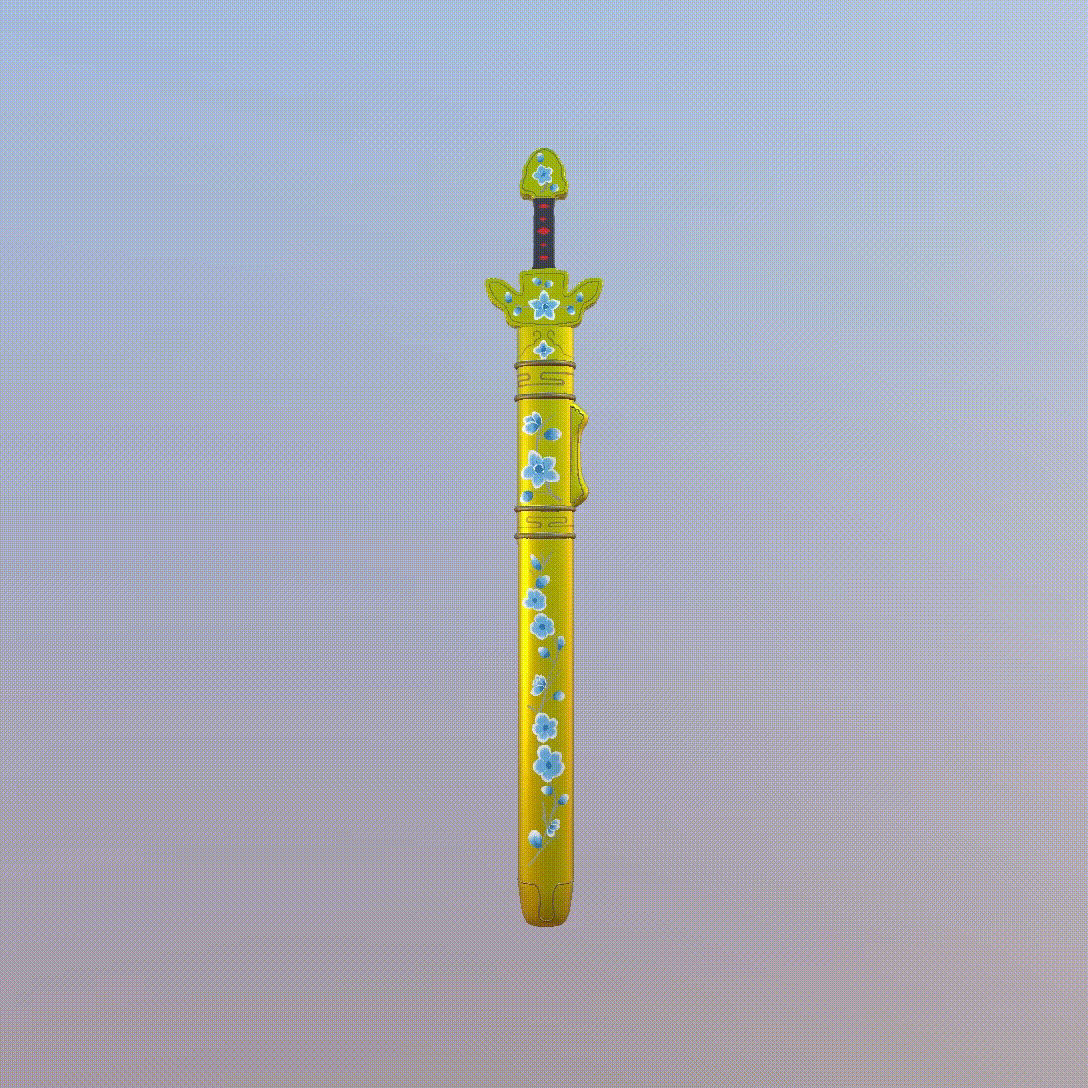
Scene 1 - Prop Sword in Farewell My Concubine
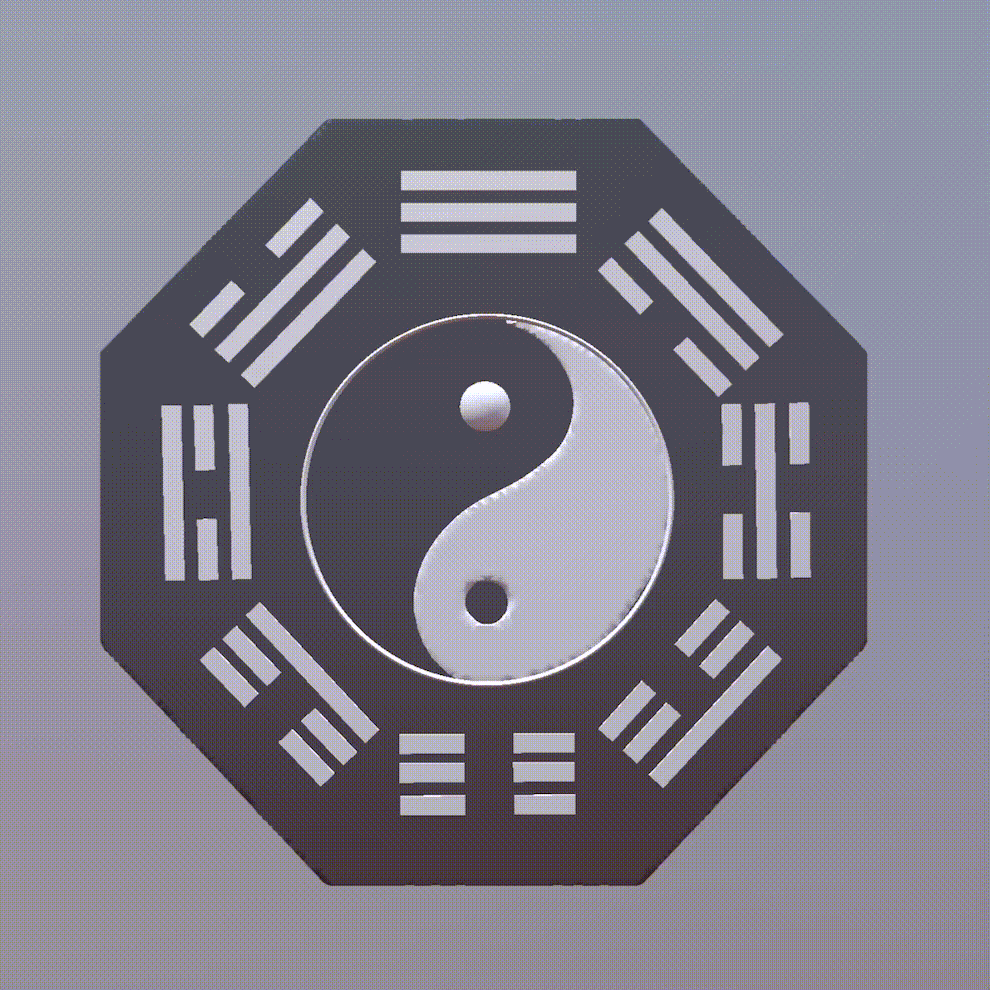
Scene 2 - Bagua (help find the way to escape)
Scenes Construction
Lighting and Practical system are mainly used in Unity to help creating a Depressing and Retro environment.
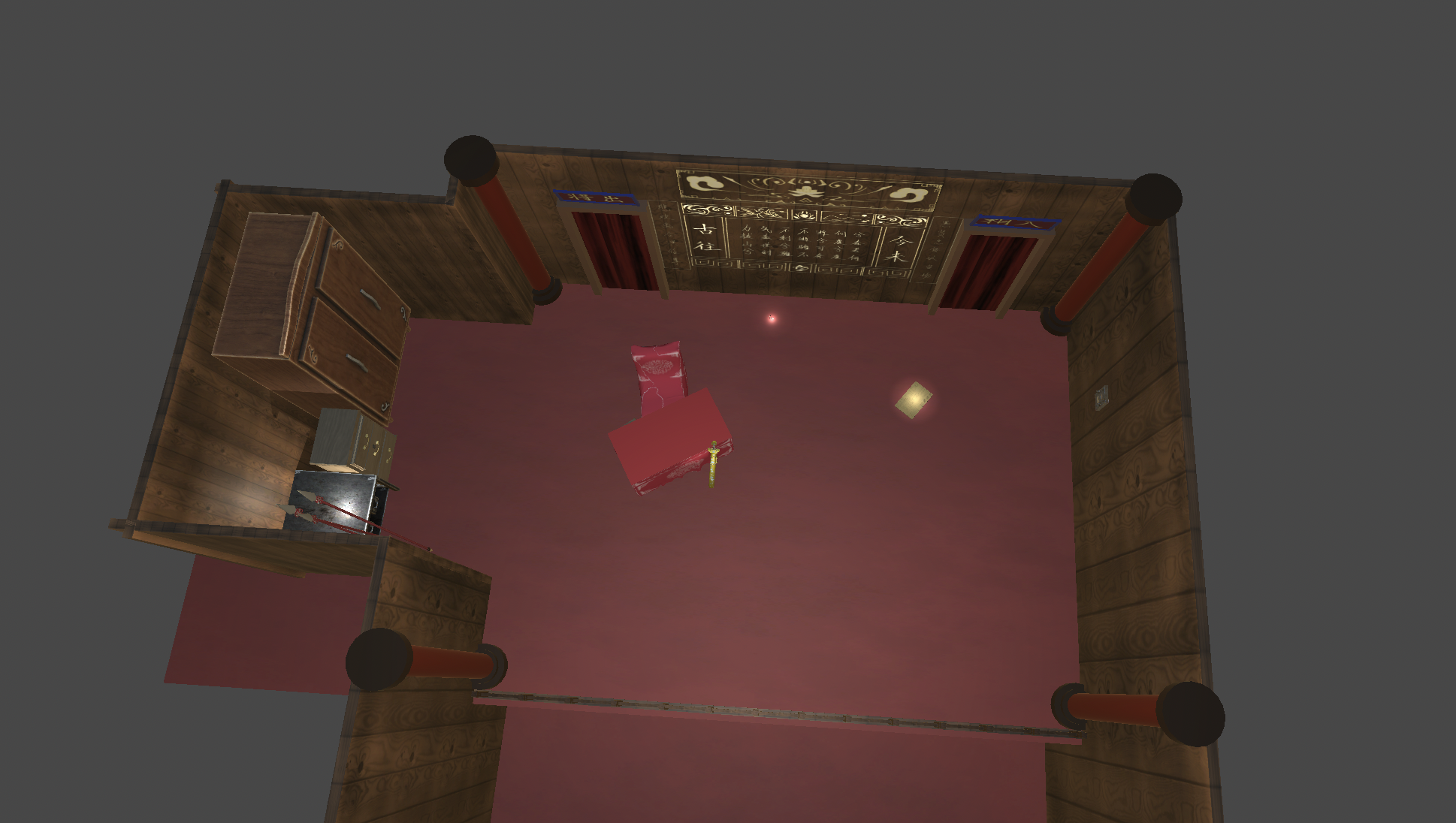
Scene 1 Aerial view
Scene 1 Live demo on screen
Scene 1 Live demo on screen
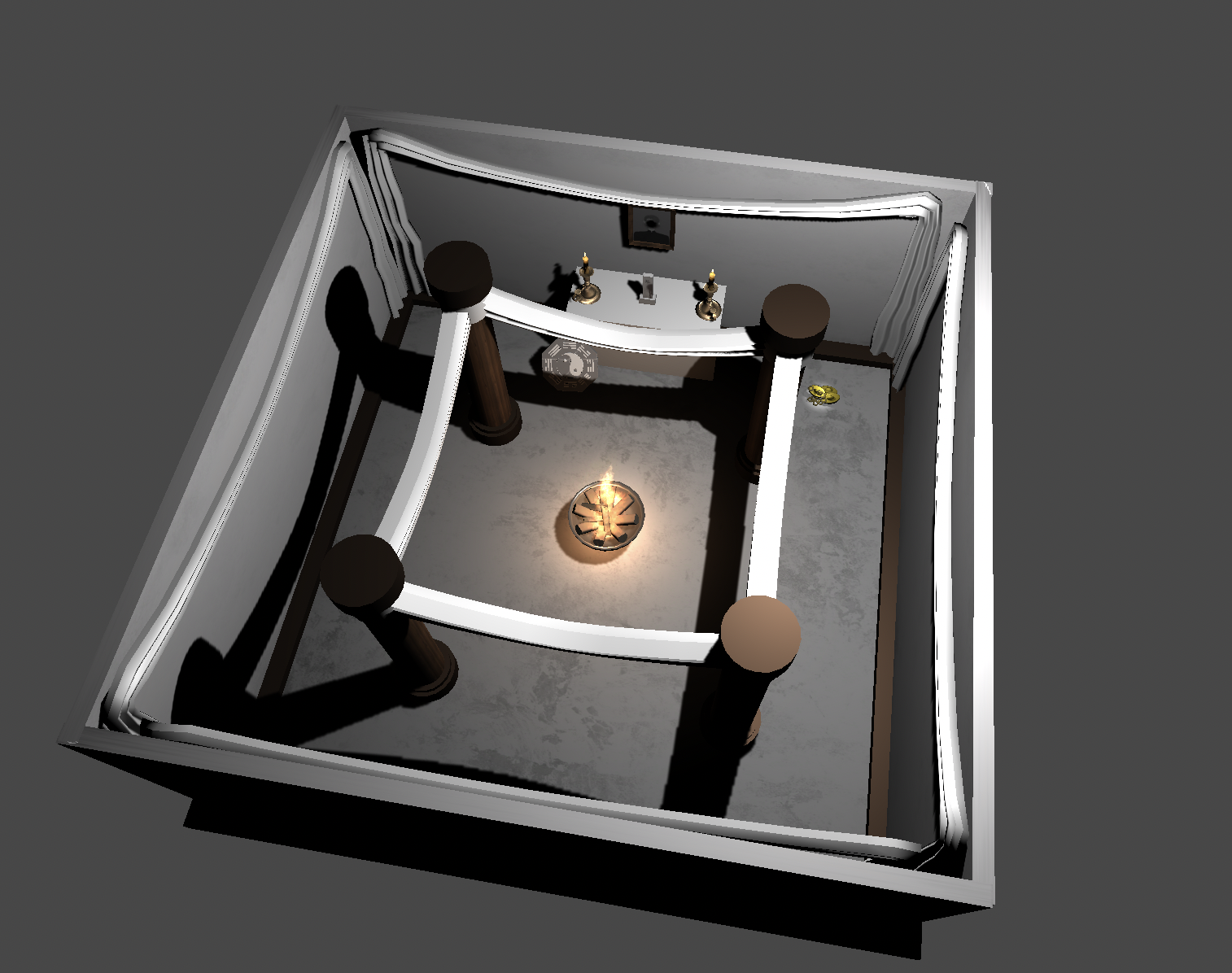
Scene 2 Aerial view
Scene 2 Live demo on screen
Scene 2 Live demo on screen
Storytelling & Animation
Frame-by-frame animation is used to narrate the game's plot, while Maya and Unity's animation tools are used to create in-game interactions. The animations are designed to feel a little creepy, preventing the player from feeling disconnected from the genre of the scene.

Example clip 1
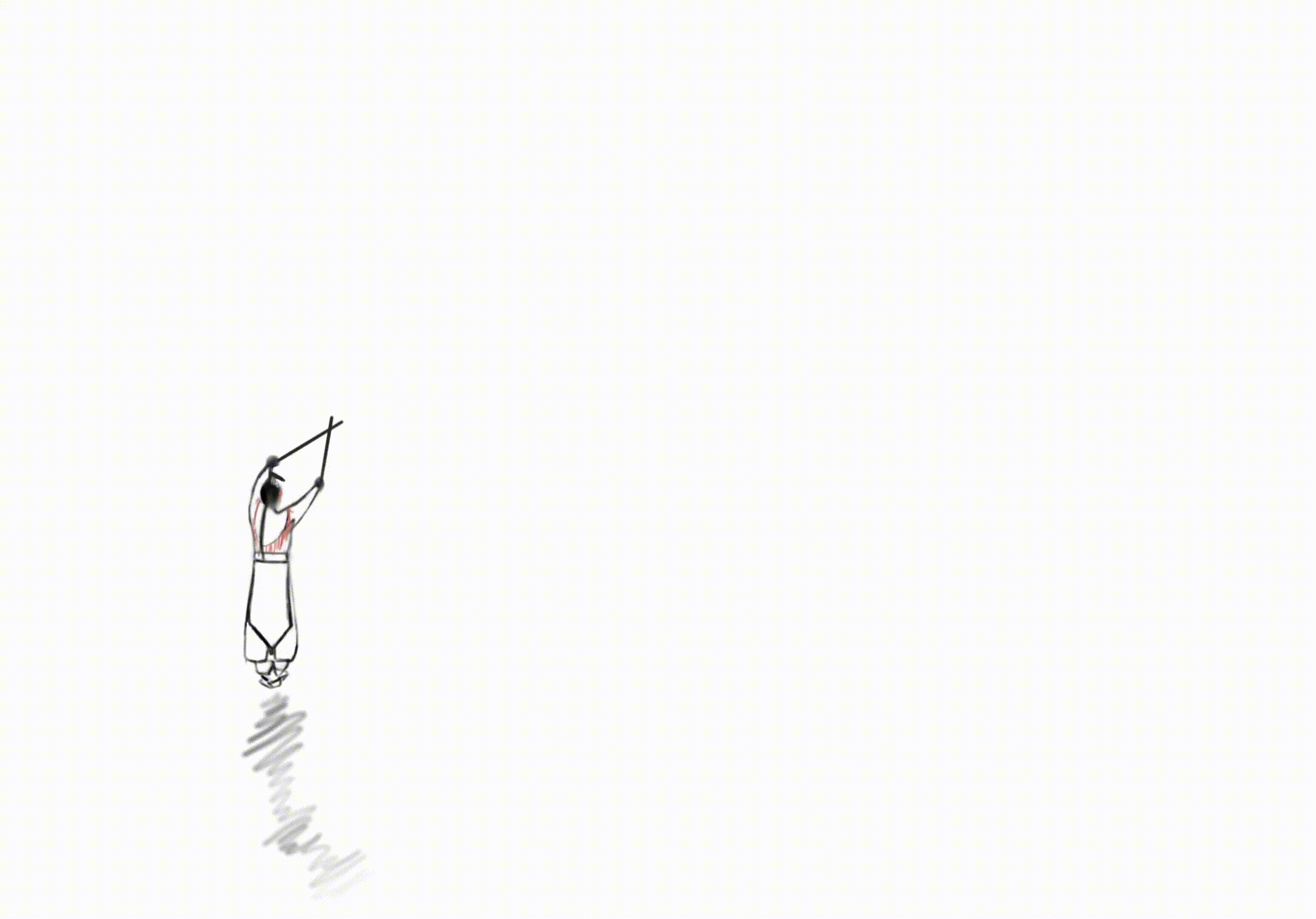
Example clip 2

Example clip 3
Example of In-game interaction Animation

Example clip 4
The complete plot animation
Functionality and Interactivity
Some in-Game user requirements is considered to improve user experience.
In-game Volume Control components
Example of In-game UI
Reflection
Since the production time is only one month, the details of many scenes are not perfect enough, there is still room for further improvement of environmental fidelity, and environmental fidelity can be further improved. The difficulty of the game mechanics is relatively low and it is more of a storytelling experience for the player. The connections between the scenes are somewhat jarring, perhaps due to the removal of the full-screen UI to enhance the player's 3d immersion. The texture of 3D animation and the consistency of 2D animation also need to be improved. Also, the location of files in the Unity folder should be better planned from the beginning to avoid having too many files that are hard to find quickly.
However, the experience of working on a full game independently gave me a real sense of the joy of making a game from scratch, including building models, painting and colouring, adding appropriate animations, lighting and sound effects. The most challenging part of pre-production was the creation and rendering of the models and animated videos, which took nearly a week to complete. I also became increasingly aware of how difficult it is to tell a story through images alone.
What's more, learning the usage of new modelling software and shading methods was arduous, but it was still well worth it to see the lights, sound effects, models, and materials added to the environment in the end result. In addition, the game process requires a lot of practice and experimentation, which is also very time-consuming. For example, the placement and visibility considerations of each item, the order of interaction of objects and the order of lighting cues, all require me to always think from the player's point of view.
